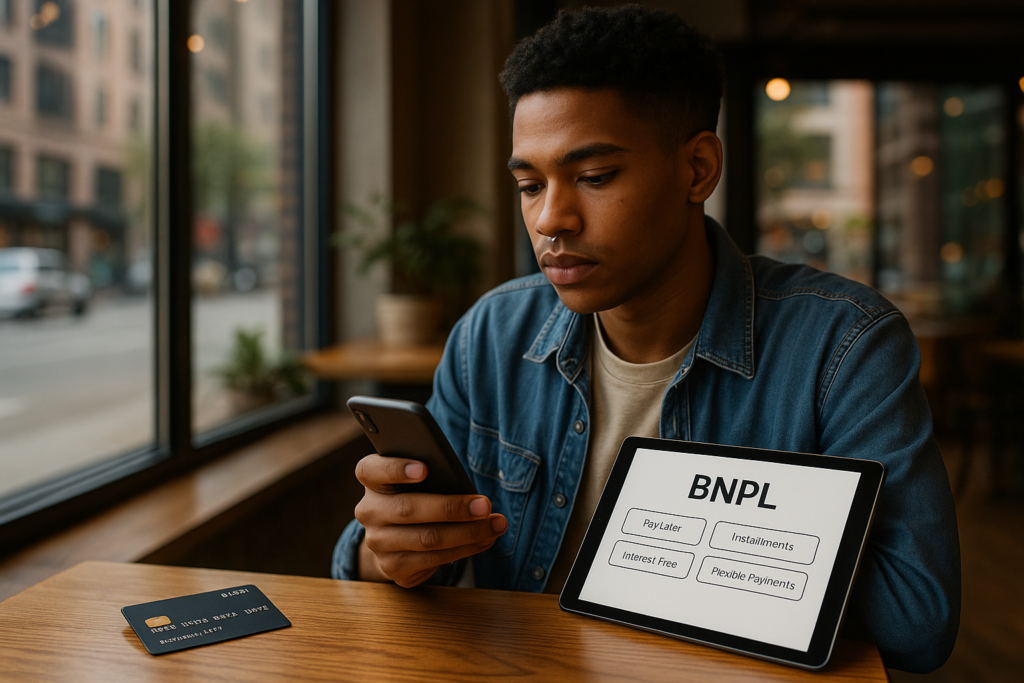In 2025, managing money has become more flexible and diverse than ever, especially for Gen Z. With digital payment options dominating the scene, understanding the differences between Buy Now, Pay Later (BNPL) services and traditional credit cards is essential. Both these financial tools offer advantages, but choosing the right one depends on your spending habits, credit goals, and financial discipline. This article compares BNPL and credit cards, helping you make smarter financial decisions and avoid pitfalls that could affect your financial future.
What Are BNPL and Credit Cards?
Buy Now, Pay Later (BNPL): BNPL services allow consumers to purchase products immediately and pay for them in installments over a period, often interest-free if paid within the stipulated timeframe. These services are offered through popular apps and websites, with companies like Afterpay, Klarna, and Affirm leading the market. BNPL appeals to younger consumers who prefer flexible payments without the complexity of credit checks or traditional credit cards.
Credit Cards: Credit cards are a longstanding financial product that allows users to borrow money up to a pre-approved limit for various purchases. They come with a billing cycle, interest charges if the balance isn’t paid in full, and various benefits like rewards, cashback, and travel perks. Unlike BNPL, credit cards help build credit history and improve one’s credit score when used responsibly.
Key Differences Between BNPL and Credit Cards
| Feature | BNPL | Credit Cards |
|---|---|---|
| Interest and Fees | Often interest-free if paid on time; late payments may attract fees | Interest charges accrue if balance isn’t paid in full; annual fees may apply |
| Impact on Credit Score | Varies—some do not report to credit bureaus, others do | Typically reports to bureaus; responsible use can build credit |
| repayment Period | Short-term installment plans, usually 4-6 weeks | Billing cycle of 30 days, with options for longer repayment |
| Ease of Access | Easy to apply via apps, minimal paperwork, instant approval | Requires credit approval, more documentation, may take longer |
| Rewards & Benefits | Limited or none; primary focus on installment convenience | Cashback, reward points, travel benefits, purchase protection |
Pros and Cons of BNPL
Advantages
- Simple to use, especially for small purchases
- Interest-free if paid within the agreed period
- No need for a credit score check in many cases
- Good for short-term cash flow management
Disadvantages
- Potential for overspending due to easy access
- Late payments can lead to fees and damage credit score
- Limited to small or specific types of purchases
Pros and Cons of Credit Cards
Advantages
- Builds credit history and improves credit score
- Offers rewards, cashback, and travel benefits
- Protection against fraud and buyer disputes
- Flexible repayment options
Disadvantages
- Avoid interest charges by paying balance in full
- Annual fees for premium cards
- Risk of debt if not managed properly
- Can negatively impact credit if misused
Which One Is Better for Gen Z in 2025?
Choosing between BNPL and credit cards depends largely on your financial habits and goals. If you want to avoid credit checks and are disciplined in paying installments, BNPL provides an attractive, interest-free option for short-term purchases. It’s ideal for budget-conscious, tech-savvy users who prioritize convenience and minimal paperwork.
On the other hand, if you aim to improve your credit score, earn rewards, or make larger purchases with better protections, a credit card is more suitable. Responsible credit card use can set up your financial future for benefits like higher credit limits, better loan terms, and exclusive rewards.
Tips for Using BNPL and Credit Cards Wisely
- Always pay on time to avoid late fees and interest charges.
- Compare credit cards for benefits that match your lifestyle—look for best credit cards for rewards or zero annual fee options.
- Keep track of your spending to prevent debt accumulation.
- Use BNPL services only for planned purchases; don’t overspend just because the payment is spread out.
- Regularly check your credit report and learn credit score tips to stay on top of your financial health.
Frequently Asked Questions (FAQs)
1. Is BNPL better than credit cards for building credit?
Not necessarily. Many BNPL providers do not report to credit bureaus, so it won’t help your credit score unless specifically designed to do so. Credit cards, when used responsibly, are better for building and improving credit history.
2. Can I use BNPL for big purchases?
BNPL is generally suited for smaller, short-term payments. For larger purchases, a credit card or a personal loan might be a safer and more flexible option.
3. Are there risks in using BNPL?
Yes. Overspending and late payments can lead to fees and hurt your credit score. Always read the terms and ensure you can pay on time before opting for BNPL.
4. How do I choose the best credit card in 2025?
Compare credit cards based on benefits, fees, rewards, and eligibility. Visit Find My Card to explore the latest offers and choose a card that suits your needs.
5. Can I switch from BNPL to a credit card later?
Yes. Many financial institutions offer credit cards for young adults or first-time applicants, which can help build credit over time. Consider your spending habits and choose a card with benefits aligned to your financial goals.
Whether you prefer the simplicity of BNPL or the benefits of credit cards, understanding their differences helps you manage your finances better. In 2025, making informed choices about your payment options is key to maintaining financial health. For more insights on credit options and personal finance tips, visit FinWitty.com. Explore different credit card options that match your lifestyle and start making smarter financial moves today!

